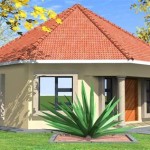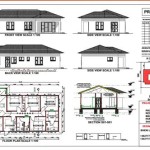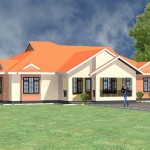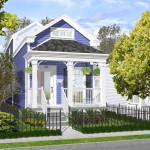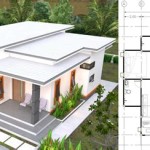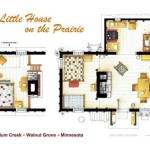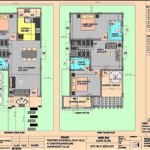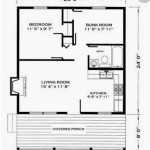Duplex House Plan CAD File: A Comprehensive Guide
A duplex house plan CAD file is a digital blueprint representing the architectural and structural design of a duplex house, created using Computer-Aided Design (CAD) software. These files contain detailed information about the building's dimensions, layout, construction materials, and other critical specifications. They are essential for architects, builders, engineers, and homeowners involved in the construction or renovation of a duplex dwelling. The availability and use of CAD files have revolutionized the design and construction process, offering unparalleled accuracy, efficiency, and collaboration opportunities.
A duplex, by definition, is a multi-family dwelling containing two separate housing units in one building. These units can be arranged side-by-side or stacked on top of each other. Duplexes are popular for various reasons, including their potential for generating rental income, accommodating extended families, and providing a more affordable housing option compared to single-family homes. The design and construction of a duplex require meticulous planning, and this is where a comprehensive CAD file becomes invaluable.
Understanding the various components and benefits of a duplex house plan CAD file is crucial for anyone involved in a duplex project. This article aims to provide a detailed overview of this topic, covering its contents, advantages, file formats, and utilization in the construction process.
Key Components of a Duplex House Plan CAD File
A comprehensive duplex house plan CAD file typically includes several distinct layers and components, each providing specific information about the building. These components are crucial for accurate construction and ensure all parties involved have a clear understanding of the project.
Architectural Drawings: These drawings depict the overall design and layout of the duplex. They include floor plans for each unit, showing the arrangement of rooms, hallways, and other spaces. Elevations are also included, which provide a visual representation of the exterior of the duplex from different angles. These drawings also detail window and door placement, roof design, and aesthetic elements.
Structural Drawings: These drawings focus on the structural integrity of the duplex. They specify the dimensions and placement of load-bearing walls, beams, columns, and foundation elements. Structural engineers use these drawings to ensure the building can withstand various loads, including gravity, wind, and seismic forces. The structural drawings often include details of the materials used, such as the type and grade of concrete, steel, or wood.
MEP (Mechanical, Electrical, and Plumbing) Drawings: These drawings outline the systems that provide essential services to the duplex. The mechanical drawings show the layout of the HVAC (heating, ventilation, and air conditioning) system, including ductwork, equipment locations, and control systems. The electrical drawings detail the wiring, outlets, switches, lighting fixtures, and electrical panel locations. The plumbing drawings illustrate the water supply, drainage, and waste disposal systems, including pipe sizes, fixture locations, and connection points. These drawings are critical for ensuring the efficient and safe operation of the duplex.
Site Plan: The site plan shows the location of the duplex on the property, including setbacks, property lines, easements, and other relevant site features. It also depicts the location of driveways, sidewalks, landscaping, and utilities. The site plan is essential for ensuring compliance with local zoning regulations and building codes.
Details and Sections: These drawings provide close-up views of specific construction details, such as wall assemblies, roof connections, and foundation details. Sections are cutaway views that reveal the internal construction of the building, showing how different elements are connected. These details are crucial for ensuring accurate construction and preventing potential problems.
Advantages of Using CAD Files for Duplex House Plans
The use of CAD files for duplex house plans offers numerous advantages over traditional paper-based methods. These advantages contribute to improved accuracy, efficiency, and collaboration throughout the design and construction process.
Accuracy and Precision: CAD software allows for precise measurements and drawing, minimizing the risk of errors. This is particularly important in duplex construction, where accurate dimensions are crucial for ensuring that both units are properly aligned and structurally sound. The ability to create and modify drawings with high precision reduces the likelihood of costly mistakes during construction.
Efficiency and Time Savings: CAD software streamlines the design process, allowing architects and designers to create and modify drawings quickly and efficiently. Features like layering, symbols, and reusable blocks save time and effort. The ability to easily make changes and revisions reduces the time required to finalize the design. This efficiency translates into faster project completion and reduced construction costs.
Collaboration and Communication: CAD files can be easily shared electronically, facilitating collaboration between architects, engineers, contractors, and homeowners. Everyone involved in the project can access the latest version of the drawings, ensuring that they are working with the most up-to-date information. This improved communication reduces the risk of misunderstandings and conflicts during construction. Some CAD software also includes features for real-time collaboration, allowing multiple users to work on the same drawing simultaneously.
Visualization and Presentation: CAD software allows for the creation of realistic 3D models and renderings of the duplex. These visualizations help homeowners and other stakeholders to better understand the design and make informed decisions. 3D models can also be used for marketing purposes, showcasing the duplex to potential buyers or renters.
Cost Savings: By reducing errors, improving efficiency, and facilitating collaboration, CAD files can lead to significant cost savings throughout the construction process. The ability to accurately estimate material quantities and prevent rework reduces waste and minimizes unexpected expenses. The improved communication and coordination between different parties also help to avoid costly delays and conflicts.
Building Information Modeling (BIM) Compatibility: CAD files can be integrated with Building Information Modeling (BIM) software, which allows for a more comprehensive and data-rich approach to building design and management. BIM models contain not only graphical information but also data about the building's components, materials, and systems. This allows for better coordination, clash detection, and life-cycle management of the duplex.
Common CAD File Formats for Duplex House Plans
Several CAD file formats are commonly used for duplex house plans, each with its own advantages and limitations. Understanding these formats is essential for ensuring compatibility and data exchange between different software applications.
DWG (Drawing): The DWG format is the native file format for AutoCAD, one of the most widely used CAD software applications. It is a proprietary format developed by Autodesk. DWG files are highly versatile and can store a wide range of 2D and 3D data. They are commonly used for architectural, engineering, and construction drawings. DWG files can be opened and edited by AutoCAD and other CAD software applications that support the format.
DXF (Drawing Exchange Format): The DXF format is an open standard developed by Autodesk as an interchange format for CAD data. It allows for the exchange of drawings between different CAD software applications, even if they do not natively support the DWG format. DXF files store data in a text-based format, which makes them relatively easy to parse and process. However, they may not support all of the advanced features of the DWG format.
DGN (Design): The DGN format is the native file format for MicroStation, another popular CAD software application. It is commonly used for infrastructure projects, such as roads, bridges, and utilities. DGN files are highly scalable and can handle large and complex drawings. They also support advanced features like parametric modeling and geographic information systems (GIS) integration. DGN files can be opened and edited by MicroStation and other CAD software applications that support the format.
PDF (Portable Document Format): While not a native CAD format, PDF is widely used for sharing and viewing duplex house plans. PDF files can be easily viewed on any device with a PDF reader, and they preserve the formatting and layout of the original document. PDF files can also be password-protected and digitally signed to ensure security and authenticity. However, PDF files are not typically editable in CAD software, so they are primarily used for viewing and printing purposes.
IFC (Industry Foundation Classes): The IFC format is an open standard developed by buildingSMART International for exchanging BIM data. It allows for the exchange of data-rich building models between different BIM software applications. IFC files contain not only graphical information but also data about the building's components, materials, and systems. This allows for better coordination, clash detection, and life-cycle management of the duplex. IFC is increasingly becoming the standard format for BIM-based projects.
When selecting a CAD file format for a duplex house plan, it is important to consider the compatibility of the software applications used by all parties involved in the project, as well as the specific requirements of the project. It is also important to ensure that the chosen format supports all of the necessary features and data.
In conclusion, a duplex house plan CAD file is a crucial tool for the successful design and construction of a duplex dwelling. Its accuracy, efficiency, and collaboration capabilities offer significant advantages over traditional methods. Selecting the appropriate CAD file format and understanding its components are essential considerations for any duplex project.
Duplex House Dwg Block For Autocad Designs Cad
Duplex Housing In Autocad Cad Free 136 8 Kb Bibliocad
30 X60 Duplex House Plan Cad Drawing N Design Floor Plans
35 X60 Duplex House Plan Free Dwg N Design Layout Plans
Duplex House In Autocad Cad Free 208 3 Kb Bibliocad
Duplex House 4 Bedrooms Dwg Plan For Autocad Designs Cad
Duplex House Dwg Block For Autocad Designs Cad
Duplex House 45 X60 Autocad Plan Drawing Plans How To
Duplex House 4 Bedrooms Dwg Plan For Autocad Designs Cad
Single Unit Duplex House Design Autocad File Basic Rules For Of First Floor Plan Plans And Designs

